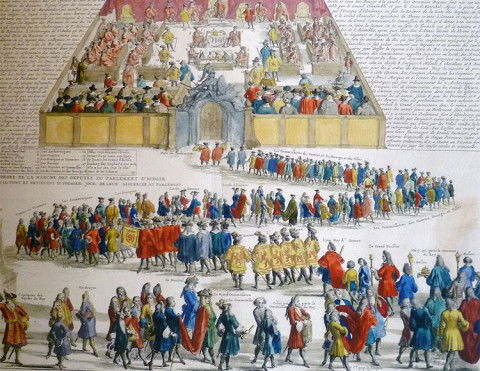Union with Scotland
The political construction of the island changed in 1603, when the Ruler of Scots, James VI, a realm which had been a long-lasting opponent to English interests, acquired the privileged position of Britain as James I, subsequently making an individual union. He styled himself Lord of Extraordinary England, albeit this had no premise in English law. Under the protection of James VI and I the Approved Ruler James Form of the Blessed Book of scriptures was distributed in 1611. It was the standard rendition of the Book of scriptures read by most Protestant Christians for 400 years until current corrections were created in the twentieth 100 years.
Painting of situated male figure, with long dark hair wearing a white cape and breeches.
The English Rebuilding reestablished the government under Ruler Charles II and harmony after the English Nationwide conflict.
In view of clashing political, strict and social positions, the English Nationwide conflict was battled between the allies of Parliament and those of Ruler Charles I, referred to casually as Roundheads and Cavaliers separately. This was an intertwined piece of the more extensive diverse Conflicts of the Three Realms, including Scotland and Ireland.
The Parliamentarians were successful, Charles I was executed and the realm supplanted by the Province. Head of the Parliament powers, Oliver Cromwell proclaimed himself Master Defender in 1653; a time of individual rule followed.After Cromwell's demise and the renunciation of his child Richard as Master Defender, Charles II was welcome to return as ruler in 1660, in a move called the Rebuilding. With the resuming of theaters, expressive arts, writing and performing expressions prospered all through the Reclamation of the "Happy Ruler" Charles II. After the Radiant Unrest of 1688, it was unavoidably settled that Lord and Parliament ought to run together, however Parliament would have the genuine power. This was laid out with the Bill of Privileges in 1689. Among the rules put down were that the law must be made by Parliament and couldn't be suspended by the Ruler, likewise that the Lord couldn't force assessments or raise a military without the earlier endorsement of Parliament. Additionally since that time, no English ruler has gone into the Place of Center when it is sitting, which is every year recognized at the State Opening of Parliament by the English ruler when the entryways of the Place of House are rammed despite the ruler's courier, representing the freedoms of Parliament and its autonomy from the monarch.
With the establishing of the Illustrious Society in 1660, science was extraordinarily supported.
In 1666 the Incomparable Fire of London destroyed the city of London, however it was revamped presently subsequently with numerous critical structures planned by Sir Christopher Wren. By the mid-to-late seventeenth hundred years, two political groups had arisen - the Conservatives and Whigs. However the Conservatives at first upheld Catholic lord James II, some of them, alongside the Whigs, during the Upset of 1688 welcomed the Dutch Ruler William of Orange to overcome James and become the lord. A few English individuals, particularly in the north, were Jacobites and kept on supporting James and his children. Under the Stuart tradition Britain extended in exchange, money and success. The Imperial Naval force fostered Europe's biggest shipper fleet. After the parliaments of Britain and Scotland agreed,[64] the two nations participated in political association, to make the Realm of Extraordinary England in 1707.To oblige the association, organizations, for example, the law and public temples of each remained separate.

